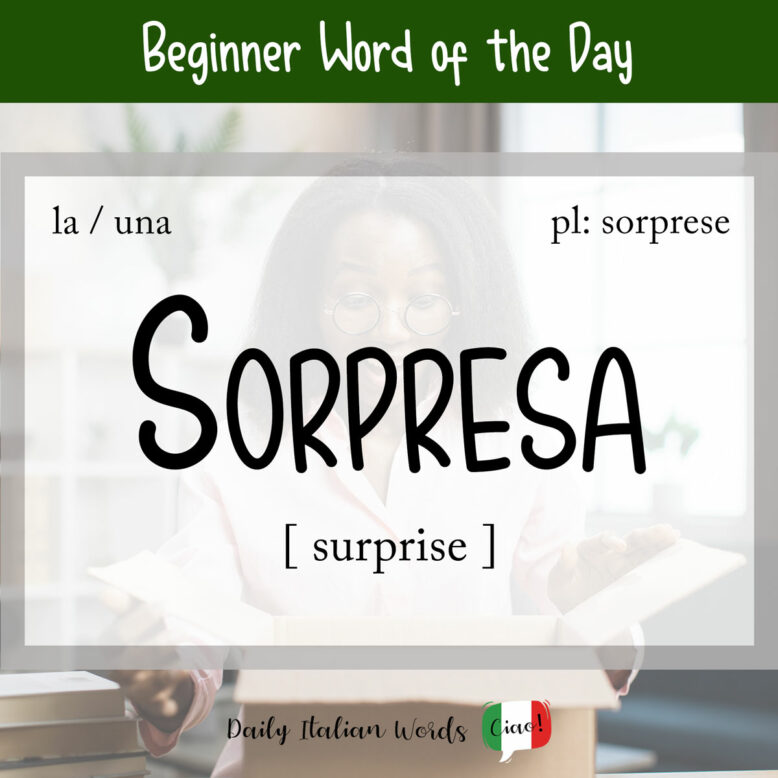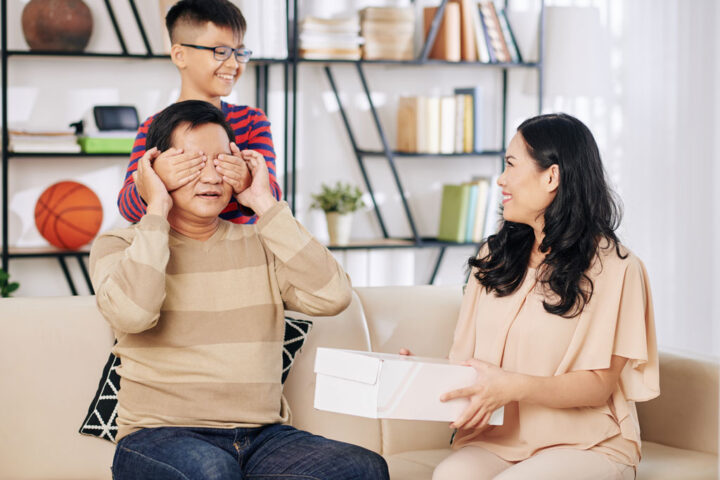The Italian word for surprise is sorpresa (feminine, plural: sorprese), which is the past participle of the verb sorprendere (to surprise). Both the English and Italian terms can trace their origin back to the medieval Latin verb superprehendere (to seize).

Surprises can be broadly divided into two categories: belle sorprese (nice surprises) and brutte sorprese (unwelcome surprises). Some different kinds of surprises include:
- festa a sorpresa = surprise party
- visita a sorpresa = surprise visit
- interrogazione / compito a sorpresa = pop quiz
- attacco a sorpresa = surprise attack
- scatola a sorpresa = jack-in-the-box
- annuncio a sorpresa = surprise announcement
- risultato a sorpresa = surprise result

The expression to take someone by surprise can be conveyed in two ways in Italian: prendere (to take) or cogliere (to catch) qualcuno di sorpresa.
La sua decisione mi ha colto di sorpresa.
His decision took me by surprise.
An alternative way of saying sorprendere qualcuno is fare una sorpresa a qualcuno (to surprise someone / to give someone a surprise).
Abbiamo fatto una bella sorpresa a mia sorella.
We gave my sister a nice surprise.
If someone gives you a pleasant surprise, you’d normally respond with the classic exclamation:
Che sorpresa! / Che bella sorpresa!
What a surprise! / What a nice surprise!

Sorpresina (little surprise) is the diminutive of sorpresa. In its plural form sorpresine, it happens to be the name for a small kind of pasta whose appearance is similar to tortellini.
Kinder Surprise (Kinder Sorpresa), also known as Kinder Egg (Ovetto Kinder), is a candy manufactured by the Italian company Ferrero since 1974. It was named as such because inside each chocolate egg is a plastic capsule that contains a sorpresa, usually a small toy.
Heather Broster is a graduate with honours in linguistics from the University of Western Ontario. She is an aspiring polyglot, proficient in English and Italian, as well as Japanese, Welsh, and French to varying degrees of fluency. Originally from Toronto, Heather has resided in various countries, notably Italy for a period of six years. Her primary focus lies in the fields of language acquisition, education, and bilingual instruction.


